Chevy's new electric SUV has the right stuff to get EV-weary buyers to take a look
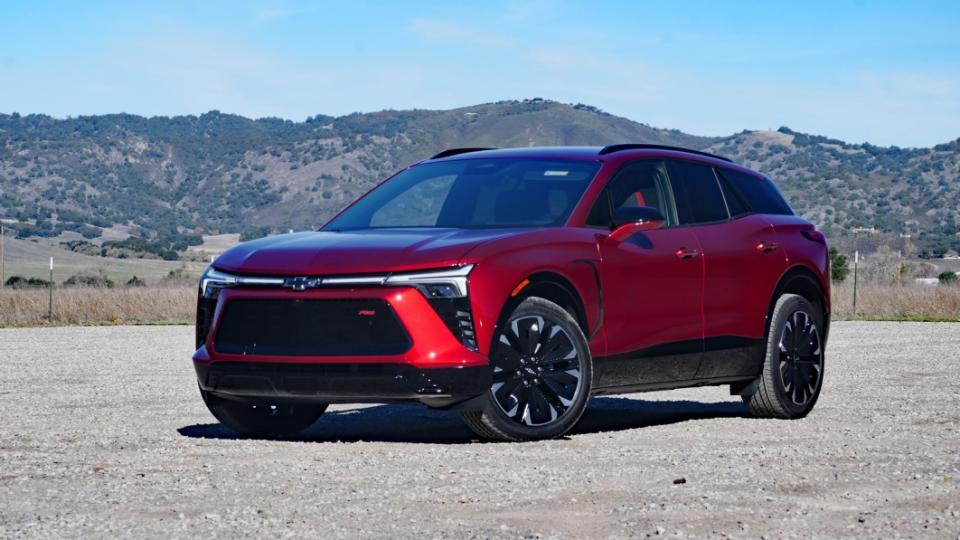
DEL MAR, Calif. — A man named Everett Rogers came up with something called the Diffusion of Innovations theory in 1962. Don’t worry, I’ll keep this short. It outlined five stages that innovative new products typically move through, and when it comes to electric vehicles, we’re still in the second stage: Early Adopters. Generally speaking, electric cars for them have needed to stand out in terms of design and branding. Different is a must, weird is OK. For EV adoption to move into the next, “Early Majority” stage, risks have to be minimized, familiarity is important and practicality made paramount.
The 2025 Chevrolet Blazer EV is basically intended to spark that Early Majority. It’s boldly styled, sure, but not in a way that’s foreign or overly futuristic. It mostly looks like the next generation of the existing, gas-powered Chevy Blazer (and clearly related to the similarly gas-only Chevy Trax). The interior may be rocking a gigantic screen, but there are still buttons and a tall center console with bins aplenty. The core of the lineup comes standard with front-wheel drive and offers all-wheel drive as an option for poor-weather traction – just like the existing Blazer and most other crossovers. Heck, even using the name Blazer speaks to the goal of familiarity.
Importantly, it’s not dull. It looks great inside and out, and while it may not be as sporty to drive as some might infer by those looks, its suspension, steering and throttle response are tuned consistently with Chevrolet’s dynamic renaissance that’s attempted to make its core products consistent in character with its halo ones, the Corvette and Camaro. It’s no different than Mazda SUVs feeling related to the Miata or four-door Porsches to the 911. To “drive like a Chevrolet” means something now, and it’s very much a positive. That the Blazer EV achieves that dynamic cohesion despite its electric platform is commendable.
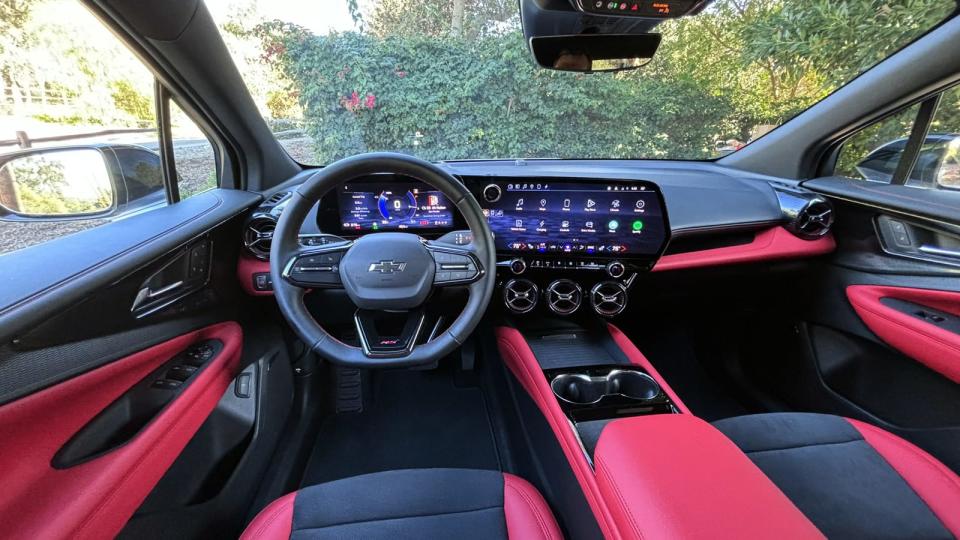
The hurdles regarding charging and cost are still there – home charging will remain impossible for some, public fast charging will remain a crap shoot for all, and the Blazer EV costs considerably more than the surviving (for now) gas-powered Blazer. Groups four and five in the innovation adoption theory, “Late Majority” and “Laggards,” still aren’t signing up. Yet, it’s much easier to see the Blazer EV piquing the interest of those who have thus far found EVs too alien.
To dive deeper into the Blazer EV story, it’s important to start with its Ultium EV platform. Blazer is the first mainstream Ultium product, following the Hummer EV and Cadillac Lyriq, with the Chevy Equinox EV to follow in the short term (along with the Honda Prologue and Acura ZDX, long story). Think of Ultium as the Lego-ification of car building. Battery modules that are roughly the size of a fat briefcase can be added or subtracted based on range, performance and packaging requirements. Motor units of differing output and type can also be mixed and matched to satisfy differing goals. That attribute is fully on display in the Blazer EV – uniquely, it can be front-, rear- or all-wheel drive.
The LT trim levels come standard with an approximately 241-horsepower permanent magnet motor that powers the front axle (official horsepower and torque figures are yet to be announced). Optional on the LT and standard on the RS is a small, 90-horsepower induction motor added to the rear axle (you can read about the differences in motor types here) for a combined 288 horsepower and 333 pound-feet of torque, but the resulting all-wheel drive system is much different than the usual “dual-motor” all-wheel-drive EVs that have motors of the same type, a more similar output on each axle and therefore a considerable performance bump. GM engineer Patrick Lencioni explained that the Blazer’s rear motor really only responds to front-wheel slippage or to aid traction when accelerating – in this way, it’s more like an all-wheel-drive Toyota hybrid. This functionality is also comparable to most conventional, mechanical all-wheel-drive systems.
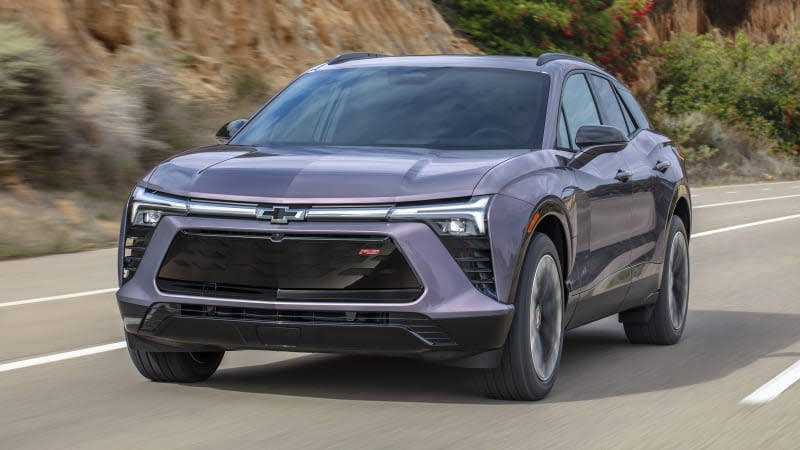
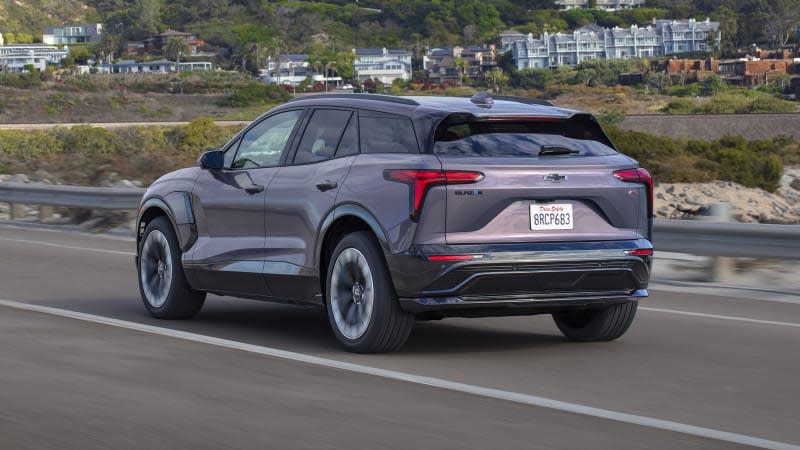
This is a smart, consumer-friendly approach for the mainstream market. Most of the Blazer EV’s competitors are rear-wheel-drive as standard, which is not ideal for those living in colder climates. For many customers, that means selecting all-wheel drive, but unlike the $1,500 or $2,000 AWD upcharge for gas-powered cars, you’re looking at two or three times that since the added traction also comes with that considerable performance bump. With the Blazer, customers are fine to stick with front-wheel drive for winter driving or should at least face a much smaller AWD upcharge (exact pricing has not been confirmed).
Most of our seat time happened in an all-wheel-drive RS. Its 288 horsepower and 333 pound-feet of torque does indeed fall short of other dual-motor EVs, and not surprisingly, its acceleration falls short as well. It doesn’t provide that “EV smack,” partly because it doesn’t have the guts to do so, but also because GM smartly tuned the throttle to ease into the available torque in a more civilized, natural manner. This also prevents torque steer. All that said, the Blazer EV e-AWD offers far more compelling performance, not to mention being quieter and smoother, than the current Blazer’s turbo-four and V6 engine options.
Here is where things get weird, though. The RS is available with rear-wheel drive courtesy of a totally different 250-kW motor that produces 340 hp and 325 lb-ft of torque. It also gets more of those battery modules, for a total capacity of 102 kWh versus 85, to achieve the best-possible range of 324 miles. The e-AWD versions will go a maximum of 279 miles. Although there is certainly a performance advantage with the rear-drive Blazer, it doesn’t radically transform the driving experience. Get visions of doughnuts in the parking lot out of your head. Instead, chief engineer Marisa Cullen says that the purpose of the rear-drive RS was to clear the 300-mile threshold that market research shows is a mental hurdle for those reluctant to make the jump to EVs. It’s also a nice bonus choice for those in warm weather climates.
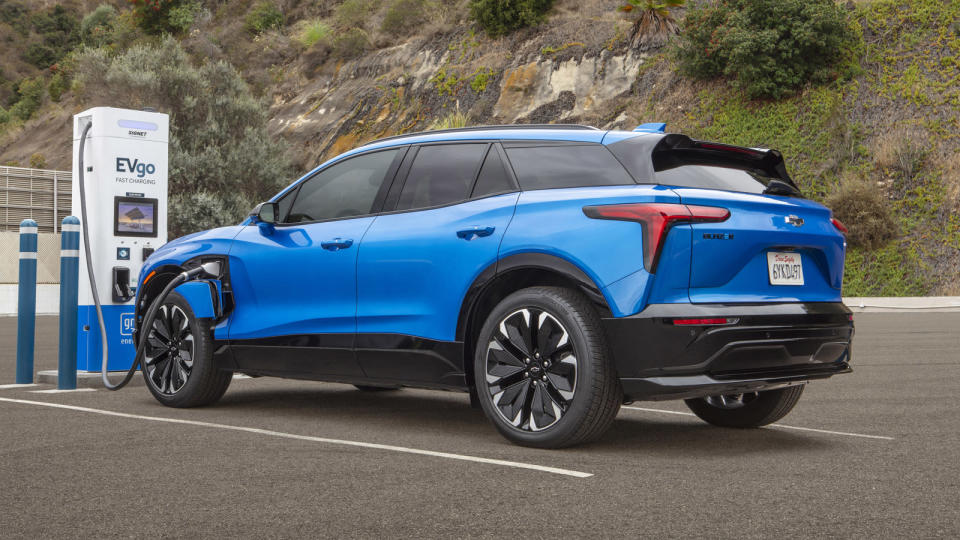

 Yahoo Autos
Yahoo Autos 
